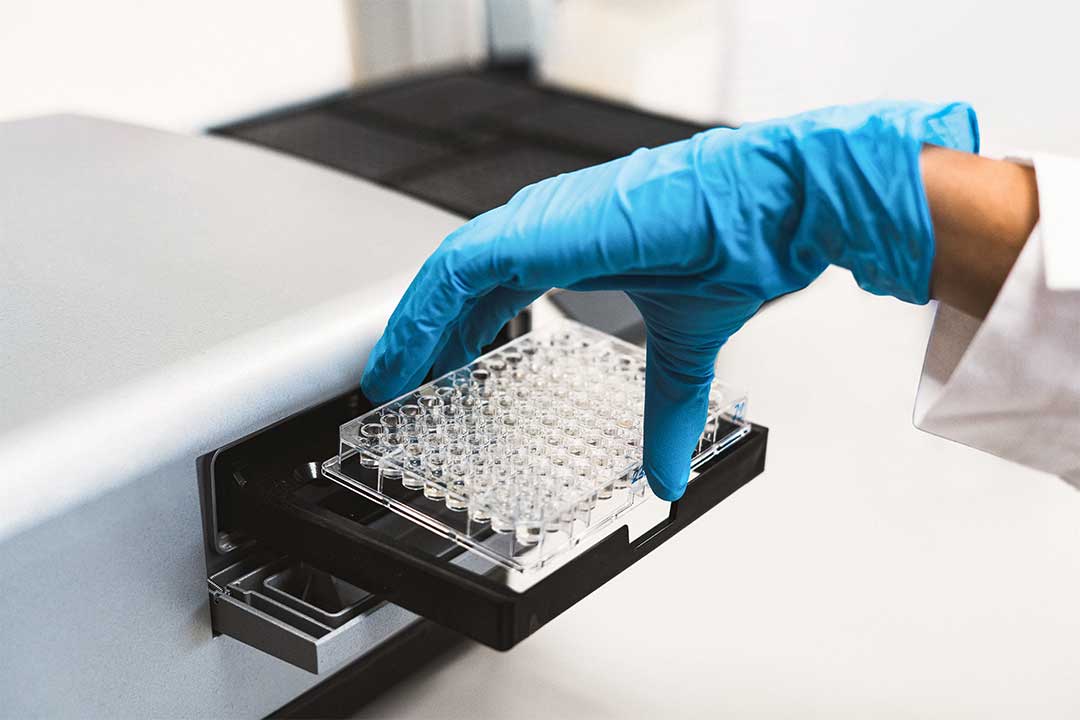What gene therapies are FDA approved?
When the first gene therapy was approved for use in the U.S. by the Food and Drug administration (FDA) in 2017, it heralded a new era in medicine.
By permanently modifying a person’s genetic code to get at the root cause of disease, gene therapies offer new hope to people with genetic diseases. Yet, in the five years following the approval of the first gene therapy, only one additional drug came to market in the U.S.
However, this began to change in 2022 as four more gene therapies were approved. There are now six currently approved gene therapies.
- Luxturna® was approved in 2017 for the treatment of Leber congenital amaurosis, an inherited eye disease and leading cause of blindness.1
- Zolgensma® was approved in 2019 to treat spinal muscular atrophy a leading cause of infant mortality.2
- Skysona® was approved in 2022 to treat cerebral adrenoleukodystrophy, a progressive neurologic disorder.3
- Zynteglo® was approved in 2022 to treat beta-thalassemia a disorder that reduces the production of hemoglobin in blood.4
- Hemgenix® was approved in 2022 to treat Hemophilia B.5
- Adstiladrin® was approved in 2022 to treat a type of bladder cancer.6
Yet, every bit as noteworthy as the clinical promise of gene therapies is their cost. While all the gene therapies approved thus far have been for rare diseases, their costs often exceed $1 million. For example, Skysona has a cost of $3.0 million, while Hemgenix has a cost of $3.5 million.7 This makes Hemgenix the most expensive single-use therapy in the U.S. to date.8
The unprecedented cost of gene therapies requires a fundamental rethinking of how treatment costs are managed. A recent survey of drug benefit decision-makers found that 81% anticipate that affordability of gene therapies will be a moderate or major challenge for their organization in the next 2 to 3 years.9
We’ll look at how gene therapies work and what you can do to prepare as more gene therapies reach the market.
How do gene therapies work?
Gene therapies work by modifying genetic code in several ways. They can:
- Replace a faulty gene responsible for an illness with a healthy one.
- Add a gene to help the body to fight off a disease.
- Turn off a malfunctioning gene.
While most gene therapies are administered in a single dose, a few are administered in several doses. There are also two primary methods to deliver gene therapies: ex vivo therapies and in vivo therapies.
Ex vivo therapies
There are also two primary methods to deliver gene therapies. With ex-vivo gene therapies, cells are removed from a person, genetically modified in a lab, and reinserted back into the patient. In the case of Skysona, a patient’s hematopoietic stem cells are extracted, modified to include a functional copy of a gene, and reintroduced to the patient via intravenous infusion.
In vivo therapies
In-vivo gene therapies are designed to work inside the body. To treat retinal dystrophy, Luxturna is injected directly into the eye of the patient to provide a working copy of a malfunctioning gene for cells in the retina. To treat bladder cancer, Adstiladrin is administered into the bladder via a urinary catheter.
Gene therapy for hemophilia and other diseases
One important aspect of most gene therapies is that they aim to permanently cure or provide long-term symptom alleviation for disease. This curative potential represents compelling new treatment options for those with conditions such as hemophilia, which previously may have required a lifetime of recurring infusion of blood clotting factors.
Big costs in a growing market
For plan sponsors, the primary consideration about gene therapies is cost.
It only takes one claim for a gene therapy to have profound financial implications for a plan sponsor. This is especially true for smaller or mid-sized groups, where a million-dollar claim for a gene therapy may meet or exceed their expected annual pharmacy drug spend.
During 2023 we anticipate seven gene therapies being in the market. For a group covering 10,000 lives, this would equate to ~4.5% chance of 1 or more claims in that year.10
Going forward, the likelihood of plan sponsors encountering such a claim will only increase as the pipeline of gene therapies continues to swell.
Additional gene therapies with estimated FDA approval decisions in 2023 include:
- Vyjuvek™ a topical, redosable gene therapy gel for people with dystrophic epidermolysis bullosa, a rare skin disorder.
- Roctavian™ an in vivo gene therapy for adults with severe Hemophilia A.
- SRP-9001 (Delandistrogene moxeparvovec) an in vivo gene therapy for children with Duchenne muscular dystrophy.
- Lovotibeglogene autotemcel (lovo-cel) a one-time ex vivo gene therapy for sickle cell disease.
- Exagamglogene autotemcel (exa-cel) an ex vivo treatment for sickle cell disease and beta-thalassemia employing CRISPR-based gene editing.
What you can do to prepare
Gene therapies are not just another new drug class. They come with new logistical and procedural complexities for providers, patients, and caregivers. Considering their cost, they also come with unprecedented financial risks for plan sponsors.
Given this, new thinking is required. Optum is working to integrate the marketplace of gene therapies, from pharmaceutical manufacturers to the payer. We’re are also focusing on creating a seamless patient experience for those receiving these therapies.
To help plan sponsors manage the risk exposure to gene therapies, we created Optum Gene Therapy Risk Protection. This risk management approach reduces the volatility presented by catastrophic claims for gene therapies by spreading out the cost into a manageable, predictable per member per month (PMPM) fee for plan sponsors.
In addition, partnering with Optum Rx gives plan sponsors access to client-specific risk modeling. This analysis will help predict their unique gene therapy risk exposure.
Optum Rx also has proven expertise in negotiating outcomes-based contracts with manufacturers. This approach ensures the price paid for a gene therapy aligns with value delivered. This is especially important for gene therapies. As significant questions remain about their durability over time, long-term monitoring of patients is essential. Optum Rx will monitor patients for as long as 15 years to ensure the gene therapy they received is continuing to function as planned. Talk to your Optum Rx representative to learn more about Optum Gene Therapy Risk Protection and other ways we are helping plan sponsors prepare for gene therapies.

Orphan drugs market: Can we afford them?

Biosimilars to save billions in this decade

3 new first-in-class therapies coming
STATEMENT REGARDING FINANCIAL INFLUENCE:
This article is directed solely to its intended audience about important developments affecting the pharmacy benefits business. It is not intended to promote the use of any drug mentioned in the article and neither the author nor Optum Rx has accepted any form of compensation for the preparation or distribution of this article.
References
1FDA. FDA approves novel gene therapy to treat patients with a rare form of inherited vision loss
3FDA. September 16, 2022 Approval letter.
5FDA. FDA Approves First Gene Therapy to Treat Adults with Hemophilia B.
6FDA. FDA Approves First Gene Therapy for the Treatment of High-Risk, Non-Muscle-Invasive Bladder Cancer
7Fierce Pharma. A $3M gene therapy: Bluebird bio breaks its own pricing record with FDA approval of Skysona
8Scientific American. $3.5-Million Hemophilia Gene Therapy Is World’s Most Expensive Drug
9Pharmaceutical Strategies Group. Trends in Specialty Drug Benefits Report.
10
